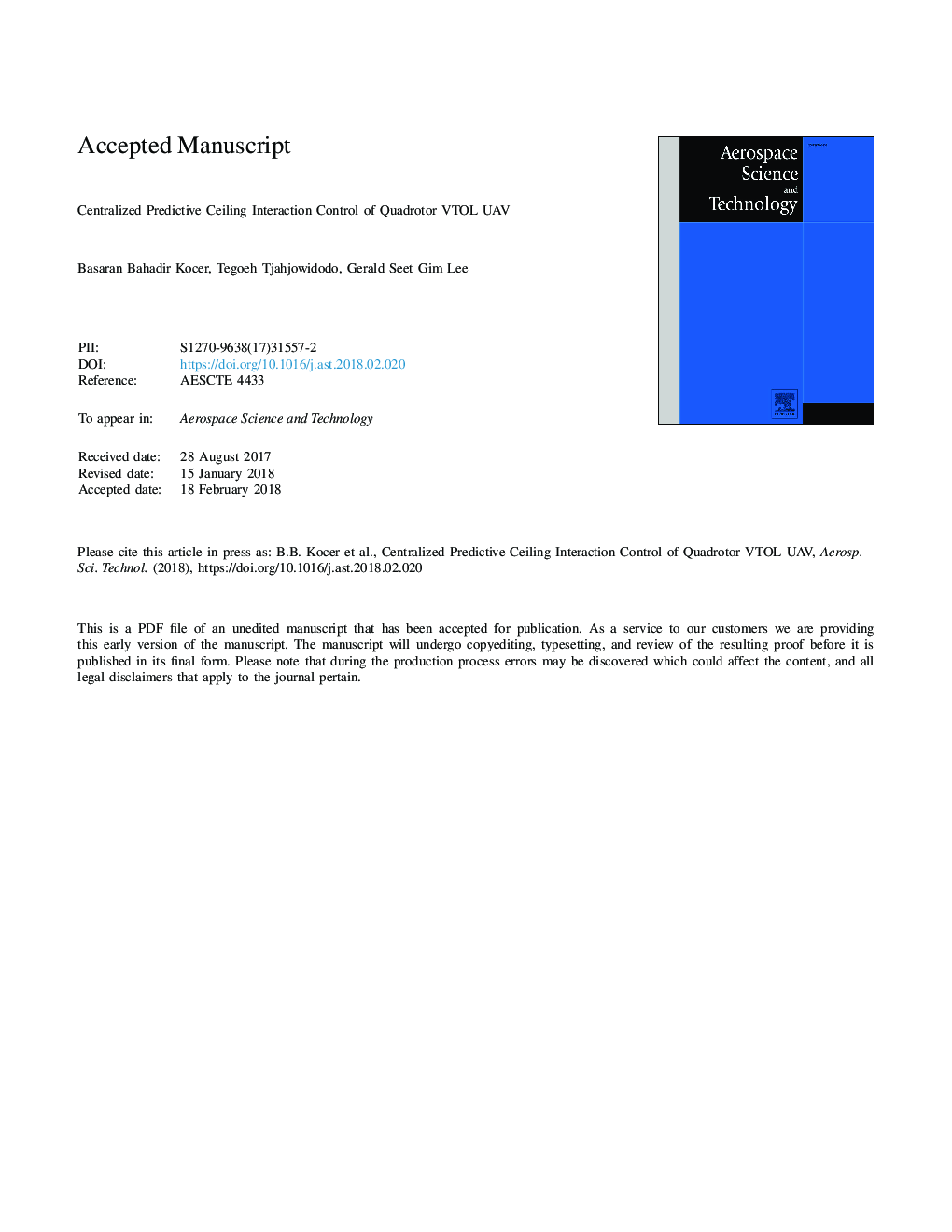| Article ID | Journal | Published Year | Pages | File Type |
|---|---|---|---|---|
| 8057953 | Aerospace Science and Technology | 2018 | 36 Pages |
Abstract
Unmanned aerial vehicle (UAV) applications have become increasingly vital, especially when human operators have limited access to the mission such as an inspection of a deep sewerage tunnel system. The problem arises when the UAV is deployed to perform a pre-defined operation, particularly in close proximity to the environment. When the UAV flies within a few centimeters away from its surrounding environment, the ceiling effect problem might occur, which will affect the flight performance. This paper presents the utilization of a centralized predictive interaction control by leveraging an identified nonlinear model of a quadrotor UAV to mitigate the problem. In the first step, real-time data is collected for translational states of the system to identify its aerodynamic parameters. Secondly, a centralized predictive controller is applied to the system in real-time to compensate for the ceiling effect. Finally, the proposed approach is validated numerically and experimentally in free-flight and ceiling interaction phases. The results show that the optimization-based controller with a centralized algorithm is able to converge within 5 ms.
Keywords
Related Topics
Physical Sciences and Engineering
Engineering
Aerospace Engineering
Authors
Basaran Bahadir Kocer, Tegoeh Tjahjowidodo, Gerald Gim Lee Seet,
